Tracking one project is hard enough. How do you manage 2, 5, or 10+ projects at once? How do you ensure your projects are working together to move your organization forward? The answer: project portfolio management.
It allows you to track and manage your entire project portfolio (collection of projects). Of course, tracking these by hand is basically impossible. As with all things business, software — in this case, project portfolio management software — makes the job much simpler. In this post, we’ll tell you about portfolio management software — sometimes called PPM software — its benefits, and what to look for when shopping for it. We’ll also touch on free project portfolio software, and why you should consider a paid solution like monday.com.
What is free portfolio management software?
First, let’s define project portfolio management.
Project portfolio management is a centralized process involving managing a collection of current and proposed projects. Organizations can group their projects into portfolios based on their mutual goals or strategic initiatives.
Think of it like project management for a single project, but scaled up a level to include a bunch of similar and potentially related projects. Free portfolio management software is any application that lets you oversee and prioritize your portfolio of projects for free.
In some cases, this just means free project portfolio management software built for high-level viewing and management, where all projects are single “tasks” in the project portfolio management system — you don’t get the detailed level you’d need for day-to-day project management.
Types of free portfolio management software
There are 3 main types of free portfolio software:
- Open-source
- Freeware
- Freemium
Let’s dive into each one a bit deeper.
Open-source
Open-source software makes its code available to the public. When you get an open-source application, you can modify code as you see fit to change the function of the application. For example, if you need to automate some task, just pop “under the hood” of the app and write some code for the automation.
Freeware
Freeware is software that, like open-source applications, is completely free of charge. There are no paid plans. That said, you can’t mess around with the code like you can with open-source. Freeware is much more limited as a result.
Freemium
Freemium software is any paid product with a free plan. The free version lets you try out the product risk-free. The company benefits by exposing you to the features, but at the same time, they hold many other functions back. That way, you’re more likely to upgrade to a paid subscription to experience the full version.
Alternatively, some software applications give you full access to their features, but limit the number of users you can add or the amount of data you can store.
What won’t you get in free portfolio management software?
Free project portfolio management software tempts you with the prospect of paying no money to manage your organization’s projects. After all, that’s quite a lot of capability you’re getting for free, right?
Well, cutting corners on your portfolio management software will cost you in the following areas:
Features
Most obviously, free solutions don’t have all the features and tools you need. It’s simply not possible for a company to develop a free solution that offers — and keeps up with — companies earning revenue on their applications.
Sure, open-source allows you to develop the features you need and customize the software to your liking. But then you need to learn how to program, or hire a programmer. And if you do the latter, now you’re spending money. Kind of makes the whole “free” thing pointless.
Compare that to a solution like monday.com that lets you customize workflows and build apps within them with little to no code.
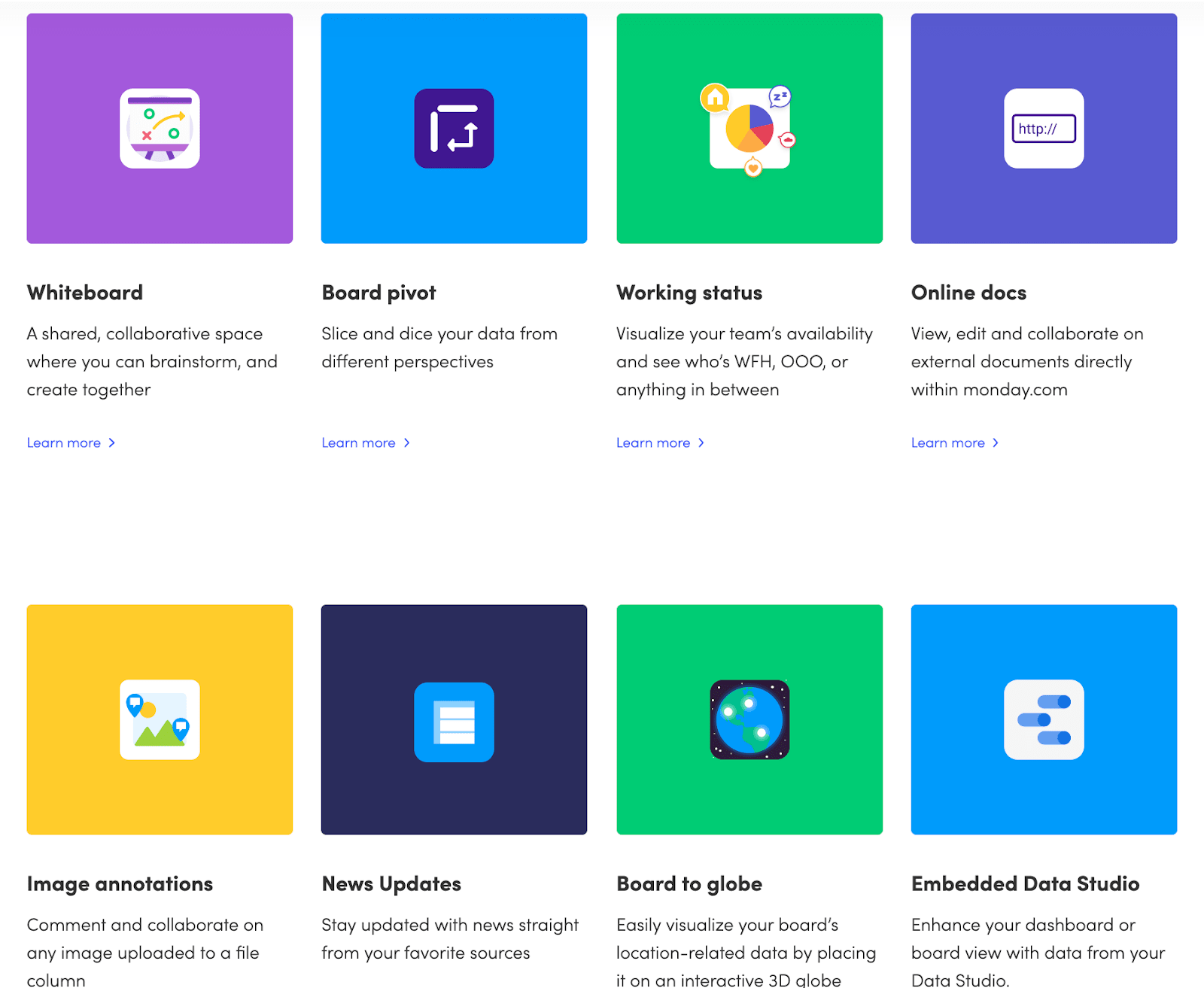
Security
There’s a quote going around the Internet that goes “If you aren’t paying for it, you’re not the customer; you’re the product being sold.” In most cases, that means collecting and possibly even selling your data. Some free portfolio management solutions may ask — in the terms and conditions, of course — that you can only use the platform if you share your data with the company.
Some freemium portfolio management applications offer the same level of security as their paid plans. But make sure you read the fine print to understand what information you may be unknowingly providing to your software vendor and third parties.
Scalability
Free software works well when you’re small, but you’ll quickly outgrow it when scaling. If you have a freemium application, you’ll have to upgrade to a paid subscription once you grow beyond the volume caps.Lack of customization
Free portfolio management platforms don’t let you customize all that much. Freemium products often lock further customization behind paid plans. If you have unique workflows, want to build your own dashboards and reports, or modify your boards and automations, you’ll likely be out of luck. (You can do all of this and more with monday.com, by the way.)
Project portfolio software benefits
Here are some reasons to get project portfolio tracker software that’s not limited to free features:
Helps you look at the big picture
The right portfolio manager will enable you to see how individual tasks contribute to projects, and how those projects contribute to your organization’s larger objectives and strategy. This makes it easier to align projects with your organization’s mission and vision.
Improves resource allocation and management
Poor resource allocation can be costly to your organization, wasting valuable time and money. With comprehensive portfolio management software, you visualize projects and see where more resources are needed, and which projects can spare them.
Saves time
With robust project portfolio software, you have a central area to view all your projects at once. You can check on progress on all of your projects with ease, cutting time spent bouncing between different projects.
Helps you identify and fix problems
Constant process improvement keeps you running efficiently, so you need a platform that supports this. monday.com’s portfolio software’s workflow visualization makes it so you can find patterns in problems your projects run into — then, you can fix them and boost your productivity.
Keeps executives informed
The “on-the-ground” people working on a project are acutely aware of what’s going on in the day-to-day. The challenge is communicating that accurately to senior management.
But with a solid portfolio software application, executives can access each project with a few clicks. Because of this, they gain access to project progress, as well as insights and data they can use for high-level decision-making.
Top features to help manage your project portfolio
So, what do you need to manage your project portfolio? Remember, you should be able to track several projects across departments and give executives insight into each project. Here are the features that’ll help do that.
Intuitive user interface
Strategic portfolio management has a lot of moving parts. You’ve got to manage several projects — each with plenty of tasks — across various departments in your organization. An intuitive user interface will save you hours and plenty of headaches when you’re trying to find things in your software.
monday.com is pretty darn easy to use and navigate, despite the number of tools packed into it. Just look at this monday.com board:
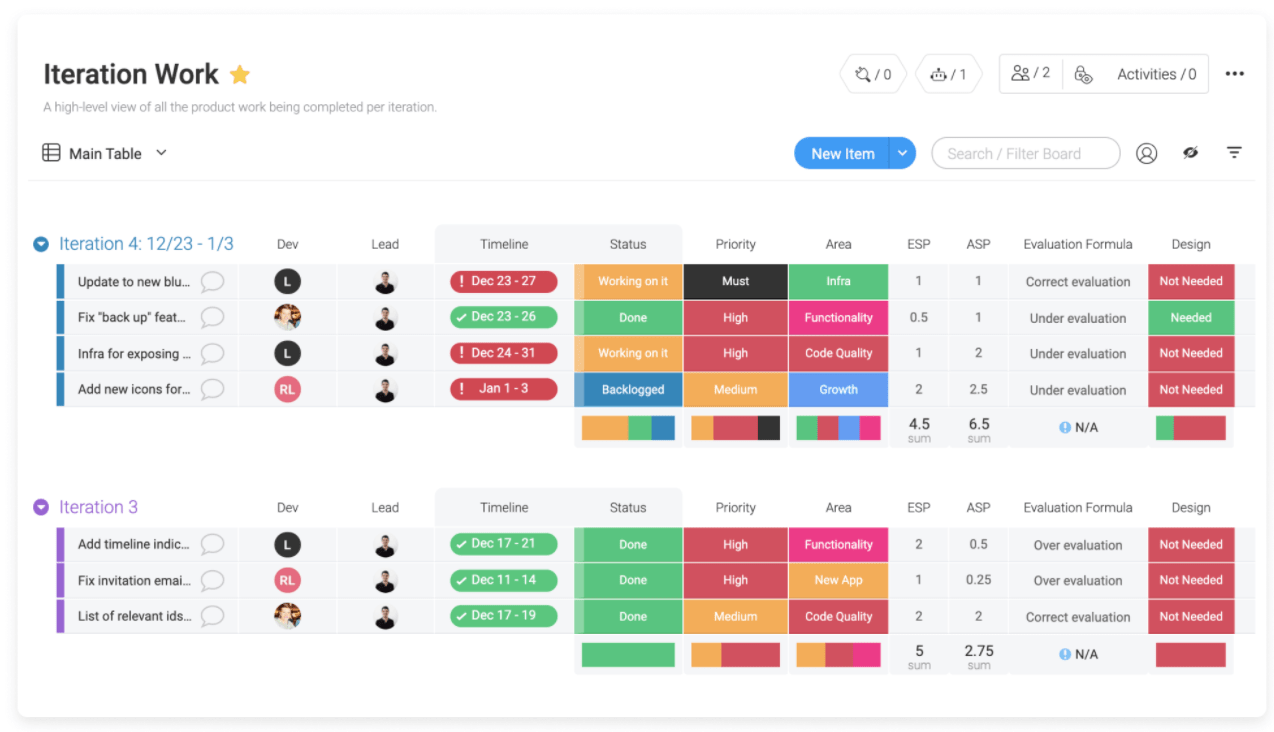
Columns are clearly labeled, buttons that are easy to locate, there’s plenty of color, and so on. It’s nice and clean, yet packed with information and easy to customize.
Workflow visualization and customization
Hey, every business is different. And so every business needs workflows that suit its needs. Seek portfolio management software that lets you visualize and customize workflows. This alone makes monday.com the best portfolio management platform on the market. It adapts to you, rather than forcing you to adapt to it.
You can customize your boards in whatever way best suits your project portfolio management needs. To show you what we mean, here’s an example of a knowledge base built on monday.com:
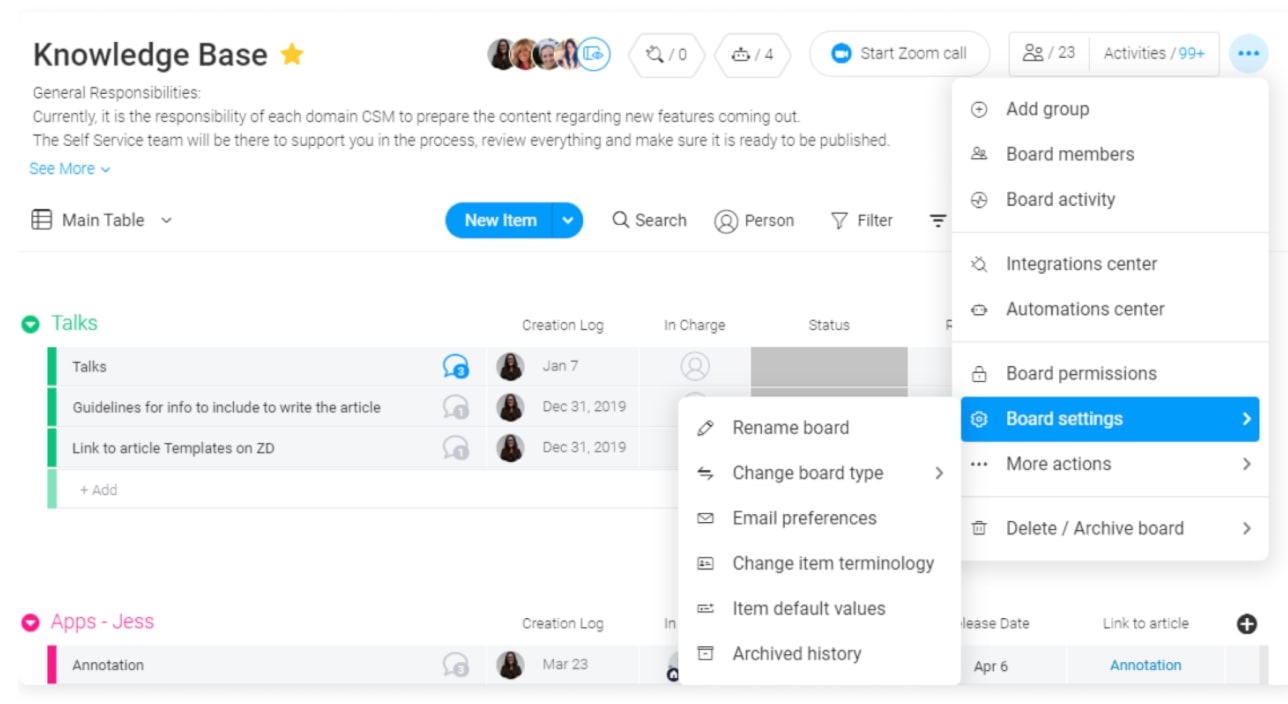
And — with the same platform, monday.com — here’s a Campaign Tracking template you can use to stay on top of marketing campaigns:
![]()
Both of these are custom-built in monday.com for two completely different purposes.
Workflow automation
Data entry, scheduling, sending a notification, moving items around your board — automating those redundant tasks saves your organization time and cuts down on human error. It also gives your employees that little bit of extra energy to redirect towards work that moves the needle.
Good portfolio management software like monday.com comes with workflow automation capabilities. Let monday.com handle the menial work — just “set it and forget it”.
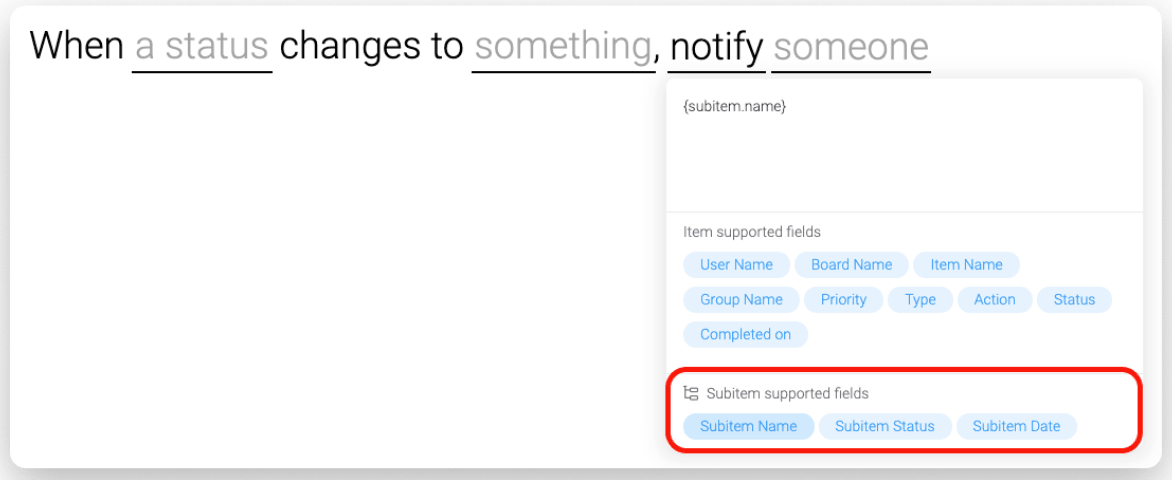
Resource allocation and management
One of the main benefits of project management in general is allocating resources appropriately to projects. You should have the flexibility to reprioritize your multiple projects and shift resources around as needed.
In many cases, having a separate area in your application solely for managing and allocating resources helps a great deal — similar to this monday.com Resource Allocation template:
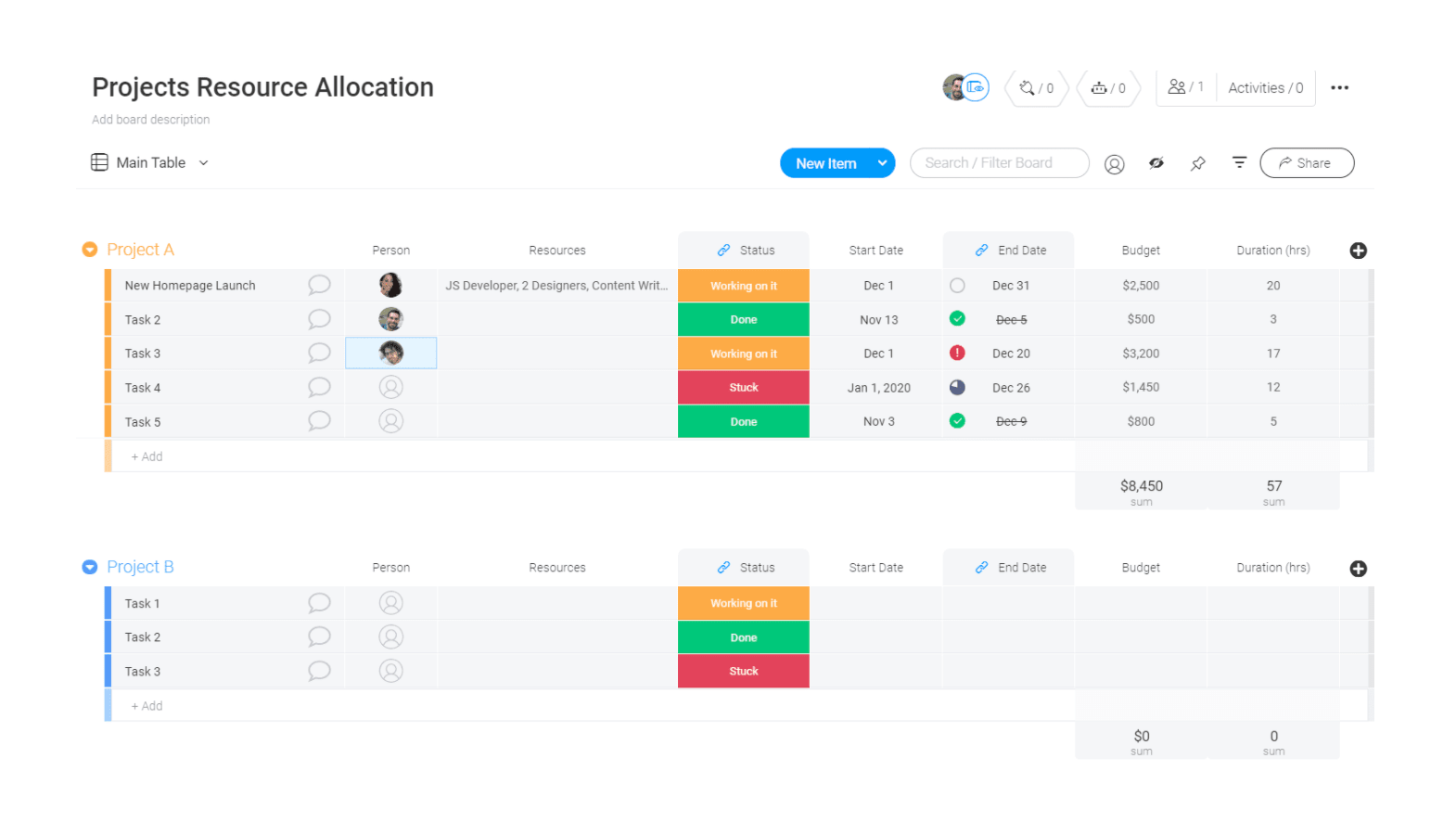
Reporting and analytics
Senior management needs hard numbers to make decisions, so your portfolio management software choice should come with a robust suite of reporting and analytics features.
For example, here’s a bar chart made in monday.com measuring team communications:
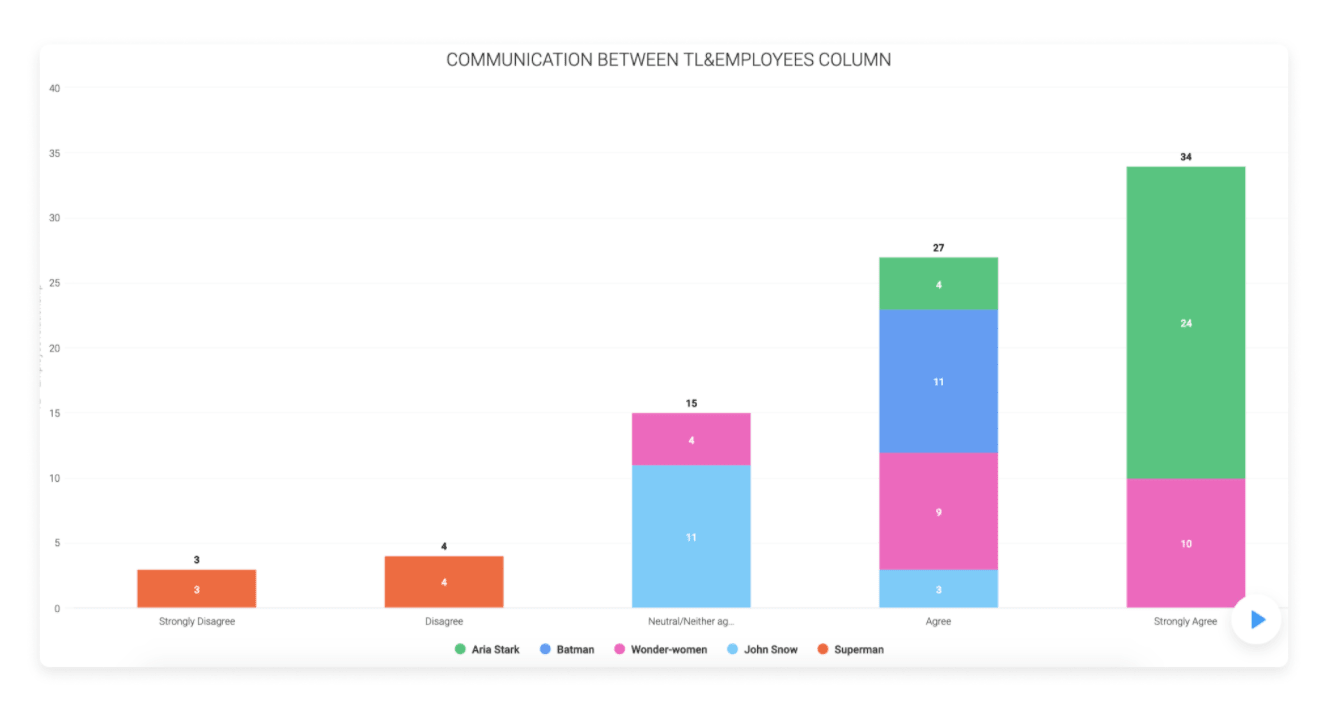
Of course, simple charts may not be enough. You need the flexibility to examine data from multiple angles
That’s why monday.com’s built advanced reporting features such as the pivot board, which allows you to quickly change the types of data you’re measuring.
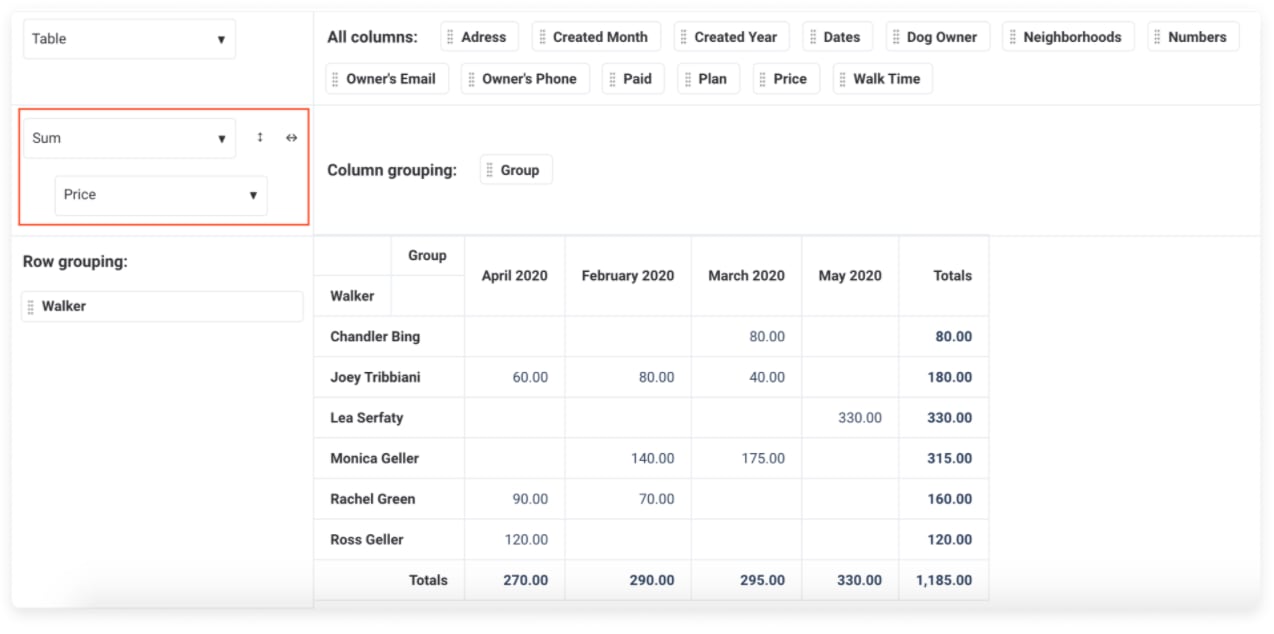
You can also add more layers of data for deeper insights into your project portfolio.
Get started with monday.com portfolio management
When it comes to project portfolio management software, you get what you pay for. Free products just don’t stand up to paid solutions in terms of features, customization, and security. Investing in a premium portfolio management solution is a worthy use of funds.
That said, monday.com offers a free 14-day trial, but you have access to all the features and functions. Nothing is off-limits. Try monday.com for free today, and you’ll see why it stands above free solutions.


